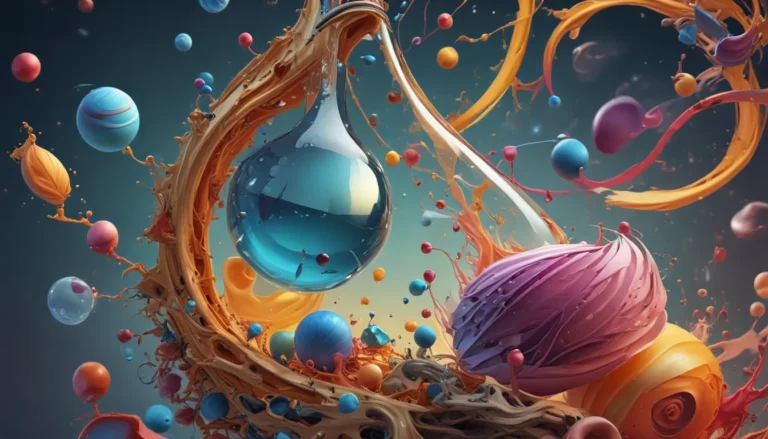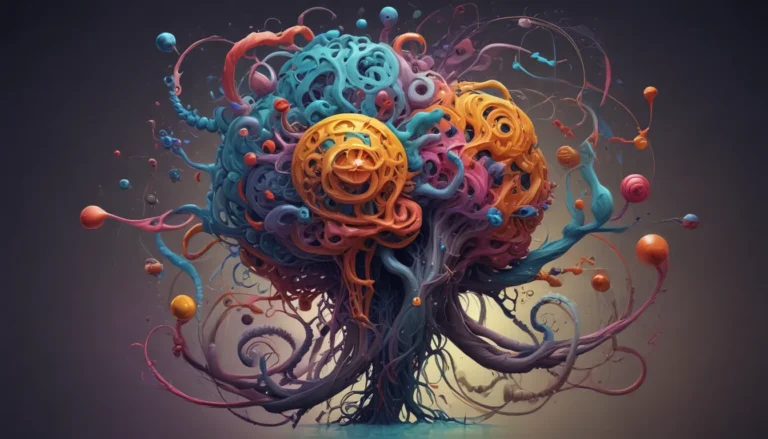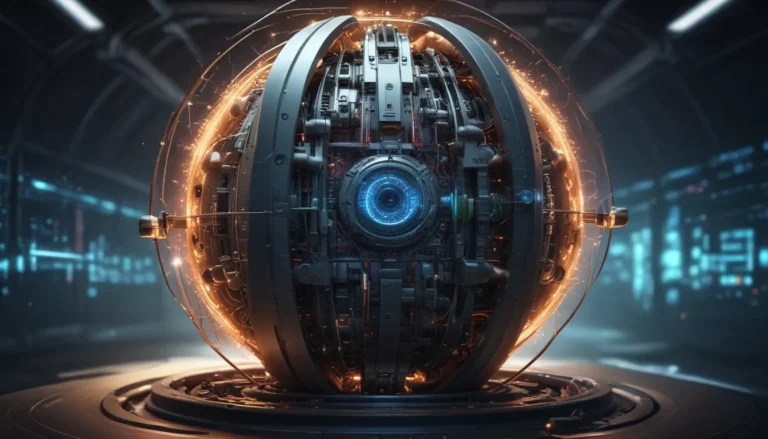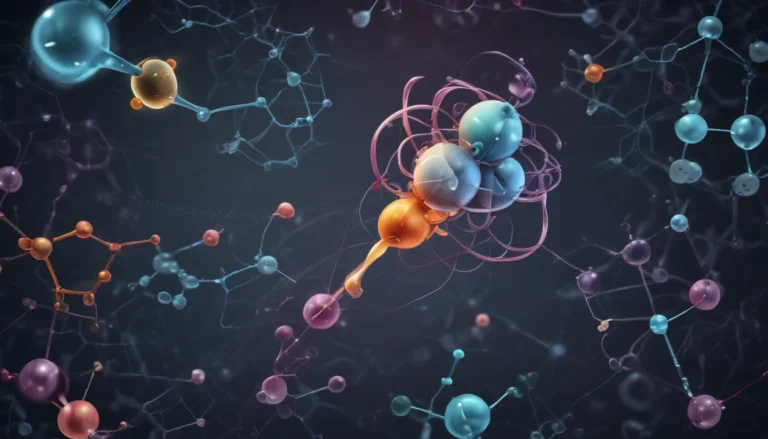A Note About Images: The images used in our articles are for illustration purposes only and may not exactly match the content. They are meant to engage readers, but the text should be relied upon for accurate information.
Welcome to the captivating world of dynamic equilibrium, where molecules engage in a never-ending dance of balance and stability. From its historical origins to its applications in everyday life, dynamic equilibrium is a fundamental concept in the realm of Chemistry that deserves our attention and exploration. In this article, we will uncover 18 unbelievable facts about dynamic equilibrium that will leave you astounded and enlightened. So, fasten your seatbelts as we embark on an exciting journey through the fascinating world of dynamic equilibrium!
Understanding Dynamic Equilibrium
Dynamic equilibrium is like a chemical balancing act, where the rates of forward and reverse reactions are equal, keeping the concentrations of reactants and products constant. It is a state of balance between opposing processes in a chemical reaction, maintaining stability over time. This delicate balance allows for a continuous movement of molecules between reactants and products, creating a dynamic system of equilibrium.
The Influence of Temperature on Dynamic Equilibrium
Temperature plays a crucial role in dynamic equilibrium, influencing the direction of chemical reactions. Changes in temperature can shift the equilibrium position towards either the endothermic or exothermic direction. By understanding this temperature dependence, scientists can manipulate dynamic equilibrium to control chemical reactions in various industrial processes.
Unraveling Le Chatelier’s Principle
Le Chatelier’s principle is a fundamental concept that explains how systems at equilibrium respond to external disturbances. When a stress is applied to a system in equilibrium, the system will adjust to counteract the change and restore balance. This principle helps elucidate the behavior of dynamic equilibrium under conditions such as changes in concentration, pressure, or temperature.
Reversible Reactions and Dynamic Equilibrium
Reversible reactions can occur in both the forward and reverse directions, leading to dynamic equilibrium when the rates of these reactions are equal. This state of balance allows for a continuous interplay between reactants and products without any net change in concentration. Reversible reactions exemplify the dynamic nature of equilibrium in chemical systems.
Real-World Examples of Dynamic Equilibrium: The Water Cycle
The water cycle serves as a natural example of dynamic equilibrium, where the continuous processes of evaporation, condensation, and precipitation maintain a balance between water vapor in the atmosphere and liquid water on Earth. This perpetual cycle showcases the concept of dynamic equilibrium in a real-world scenario, highlighting its importance in sustaining life on our planet.
Dynamic Equilibrium Across Different Scales
Dynamic equilibrium is not confined to a specific scale or context but can be observed in various chemical systems ranging from microscopic cellular processes to large-scale industrial reactions. Its wide-ranging applicability underscores its fundamental role in chemical phenomena, from enzyme-substrate interactions to ammonia synthesis in industrial processes.
Influence of Catalysts on Dynamic Equilibrium
Catalysts enhance the rate of chemical reactions without altering the position of dynamic equilibrium. While catalysts speed up both the forward and reverse reactions, they do not affect the equilibrium concentrations of reactants and products. This unique characteristic of catalysts illustrates their role in accelerating reaction rates without changing the equilibrium state.
Visual Representation of Dynamic Equilibrium
In chemical equations, dynamic equilibrium is commonly represented using a double arrow symbol (?), indicating the ability of the reaction to proceed in both the forward and reverse directions. This visual representation serves as a reminder of the ongoing interplay between reactants and products in dynamic equilibrium, symbolizing a state of balance.
Manipulating Dynamic Equilibrium: Pressure and Concentration
Changes in pressure and concentration can influence the position of dynamic equilibrium in a reaction. According to Le Chatelier’s principle, increases or decreases in pressure can shift the equilibrium towards the side with fewer or more gas molecules, respectively. Similarly, alterations in reactant or product concentrations can impact the equilibrium position, allowing for the optimization of chemical reactions.
The Dynamic Nature of Equilibrium
Contrary to its name, dynamic equilibrium is not a static state but a dynamic process where molecules are in constant motion, engaging in collisions and interactions. Despite the lack of net change in reactant and product concentrations, dynamic equilibrium represents a continuous movement of molecules in forward and reverse reactions.
Key Factors Affecting Dynamic Equilibrium
External factors such as changes in temperature, pressure, and concentration can disrupt dynamic equilibrium, leading to shifts in the equilibrium position. By understanding these key factors, scientists can manipulate dynamic equilibrium to optimize reaction conditions and maximize desired product yields in various chemical processes.
Significance in Chemical Kinetics
Dynamic equilibrium is a fundamental concept in chemical kinetics, providing valuable insights into reaction rates and mechanisms. Understanding dynamic equilibrium is crucial for predicting reaction progress and designing optimal reaction conditions in a wide range of chemical applications, from pharmaceuticals to environmental chemistry.
Flexibility in Heterogeneous Systems
Dynamic equilibrium is not limited to homogeneous systems but can also occur in heterogeneous systems where reactants and products are present in different phases. This flexibility allows for equilibrium to be achieved in diverse chemical environments, such as the dissolution of solid solutes in solvents, showcasing the adaptability of dynamic equilibrium.
Reversibility of Dynamic Equilibrium
One of the defining characteristics of dynamic equilibrium is its reversibility, allowing systems to shift in response to changes in conditions and reach a new equilibrium position. This property provides flexibility and adaptability in chemical systems, enabling dynamic equilibrium to maintain balance and stability in diverse environments.
Advancing Our Understanding of Chemical Systems
Studying dynamic equilibrium expands our understanding of chemical processes and reactions, providing insights into factors that influence equilibrium positions. This knowledge empowers scientists to design processes that optimize desired outcomes, from maximizing product yields to developing innovative solutions for complex chemical problems. Dynamic equilibrium illuminates the interconnected and ever-changing nature of chemical systems, inspiring further exploration and discovery.
Conclusion
Dynamic equilibrium is an intriguing concept in chemistry that plays a pivotal role in understanding chemical processes and reactions. Through the equilibrium constant, we can quantify the balance between reactants and products in reversible reactions, shedding light on the dynamic nature of equilibrium. By grasping the concept of dynamic equilibrium, scientists can manipulate reactions to optimize yields, design efficient catalysts, and innovate solutions to chemical challenges. Dynamic equilibrium brings a dynamic perspective to the world of chemistry, highlighting the continuous motion and balance of molecules in chemical systems.
FAQs
-
What is dynamic equilibrium in chemistry?
Dynamic equilibrium is a state in a reversible chemical reaction where the rate of the forward reaction is equal to the rate of the reverse reaction, showcasing a continuous movement of molecules between reactants and products. -
How is dynamic equilibrium different from static equilibrium?
Dynamic equilibrium represents a balance between opposing reactions occurring simultaneously at the same rate, unlike static equilibrium, which signifies a system that has ceased any movement or change. -
What is the significance of dynamic equilibrium?
Dynamic equilibrium allows us to quantify the relative concentrations of reactants and products in a reversible reaction, providing insights into reaction rates, system behavior under different conditions, and the design of efficient chemical processes. -
How does Le Chatelier’s principle relate to dynamic equilibrium?
Le Chatelier’s principle explains how systems at equilibrium respond to external disturbances by shifting the equilibrium position to counteract changes in temperature, pressure, or concentration, illustrating the dynamic nature of equilibrium systems. -
Can dynamic equilibrium be disrupted?
Yes, dynamic equilibrium can be disturbed by changes in temperature, pressure, or concentration, leading to shifts in the equilibrium position and alterations in the relative concentrations of reactants and products.
Unravel the mysteries of dynamic equilibrium, expand your knowledge of physical chemistry principles, and delve into the captivating intricacies of chemical equilibrium. Explore the fascinating world of chemistry and discover the wonders of dynamic equilibrium that shape our understanding of chemical systems. Join us on this enlightening journey of discovery and exploration!






